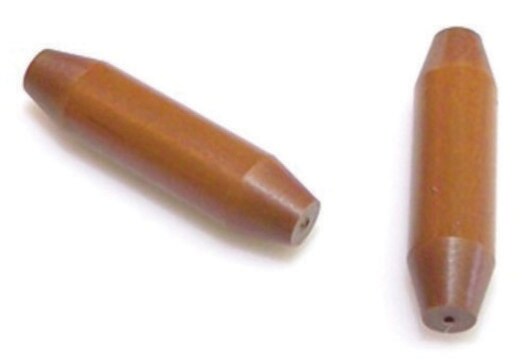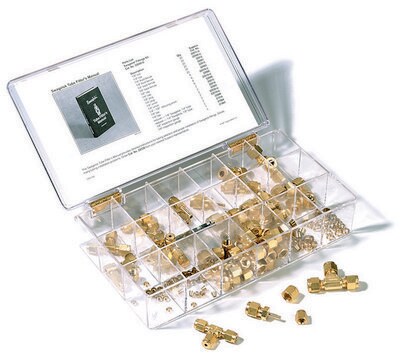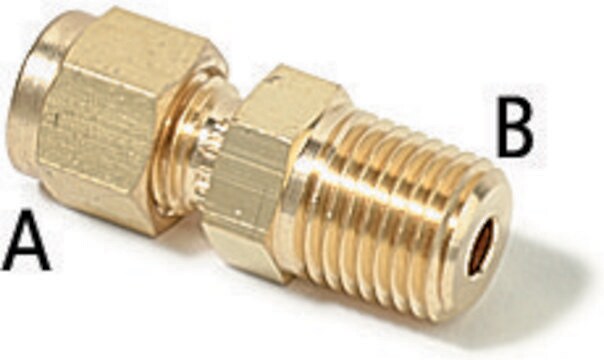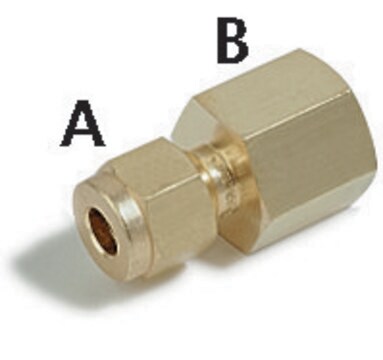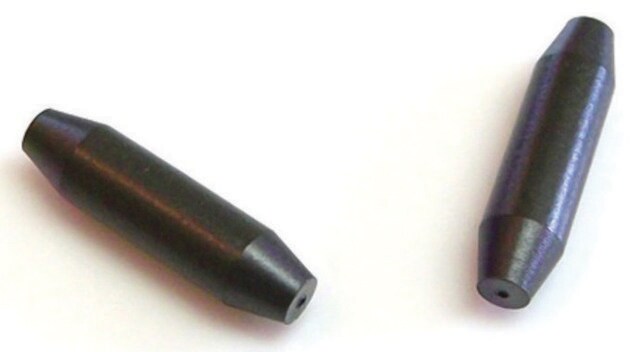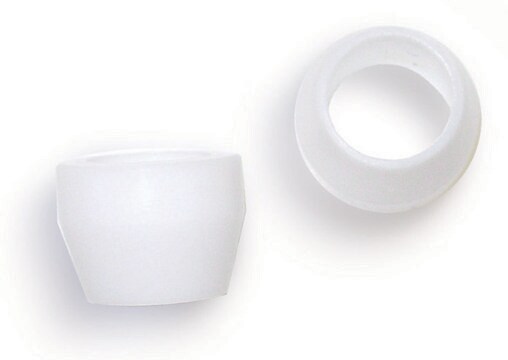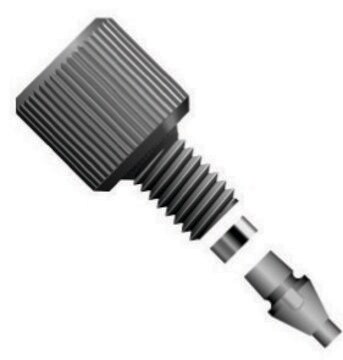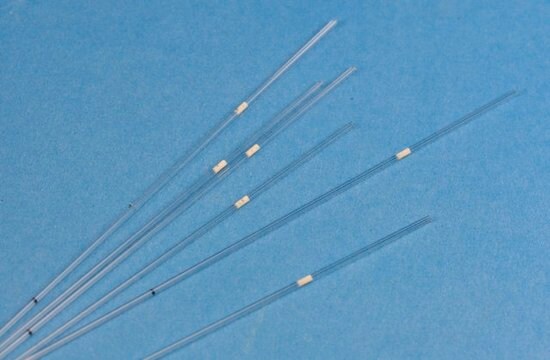23796
Capillary Column Butt Connector
I.D. 0.4 mm, Supeltex M-2 ferrule included
Sign Into View Organizational & Contract Pricing
All Photos(2)
About This Item
UNSPSC Code:
41115700
Recommended Products
packaging
pkg of 1 ea
technique(s)
gas chromatography (GC): suitable
I.D.
0.4 mm
Looking for similar products? Visit Product Comparison Guide
General description
Capillary column butt connector is made by inserting two capillaries into a piece of PTFE shrinking tubing, which when heat is applied secures the two capillaries in place. It has shown to have no contribution to band spreading.
This device consists of a double-tapered ferrule and a stainless steel compression body with a threaded nut. Small (2.3 cm x 0.6 cm) and light (4.4 g with ferrule), it provides a gas tight seal without a change in column efficiency or inertness. The columns to be connected can have the same or different internal and external diameters. The butt connection is made inside the special double-tapered ferrule. The ferrule is then compressed within the housing. When the column ends are butted squarely and tightly together, the butt connector will not alter the chromatographic performance of your capillary columns. There is little or no dead volume and little chance of gas flow disruption by following these steps:
- Make sure the bore of the ferrule is clean. Blow out any ferrule fragments with nitrogen. Using a magnifier, examine the column ends to be connected. Make sure each cut is clean and square. The two ends must butt squarely, without any gaps.
- With white typewriter correction fluid, place a reference mark 1/4 inch from the end of the column with the larger bore. This mark will help you to confirm visually that the end of the column is centered within the 1/2 inch ferrule.
- Place the ferrule inside the housing and loosely tighten the nut. Feed the unmarked column completely through the ferrule and out the opposite end. Cut off ~1 inch (25 mm) of the column to ensure no ferrule fragments are in the column. Draw the column back far enough to insert the marked column into the ferrule to the indicating mark. Tighten the nut about 1/8 turn past fingertight.
- Press the ends of the columns together, observing the reference mark to make certain they butt together at the center of the ferrule. Tighten the ferrule to about 1/4-1/2 turn past fingertight. Gently pull on both columns to ensure they are secure. If they are loose, additional tightening is necessary.
Other Notes
We offer a variety of chromatography accessories including analytical syringes
Choose from one of the most recent versions:
Certificates of Analysis (COA)
Lot/Batch Number
Sorry, we don't have COAs for this product available online at this time.
If you need assistance, please contact Customer Support.
Already Own This Product?
Find documentation for the products that you have recently purchased in the Document Library.
Customers Also Viewed
Packed Bed Column.
Deyl SZ
Capillary Electrophoresis: Theory and Practice, 113-114 (2001)
Our team of scientists has experience in all areas of research including Life Science, Material Science, Chemical Synthesis, Chromatography, Analytical and many others.
Contact Technical Service
